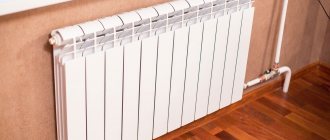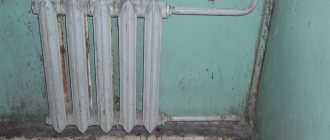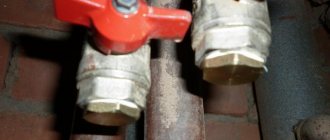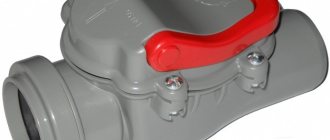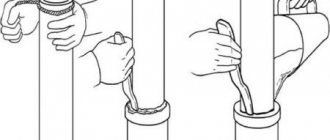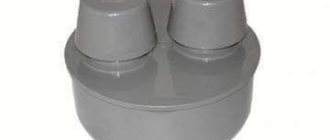Living in an apartment building, you have to use utilities, and they are paid. It is no secret that at least one apartment on the rise will turn out to be a malicious defaulter, to whom public utilities, after a long period of non-payment, take radical approaches. One such method is stubs. What it is and how to remove the plug from the sewer yourself will be discussed in this article.
Plug blocking the sewer
Purpose of the device
Plugs are a kind of valves that allow you to block the sewer hole connecting the common riser with the system of a specific apartment. This innovation is used in cases where utility workers cannot get into the apartment of defaulters in order to shut off the water supply. Therefore, workarounds are being undertaken.
By introducing special devices through the drain pipe leading to the attic space, shut-off valves are installed, supplied to the butt joint of a particular apartment. Such an overlap will prevent feces from going down the drain - waste will accumulate in front of the plug and eventually clog not only the toilet, but also the pipes that drain water from the sink and bathtub.
Drain shutoff option
How quickly this happens depends on the type of stub:
- a lattice-shaped ceiling will allow water to pass out, and only solid substances will accumulate;
- The solid valve closes the side hole into the sewer tightly.
The actions of installing the plugs themselves are not so difficult if they are performed by specialists, but they require maximum precision so that these actions do not harm innocent neighbors.
Sewer plugs as a method of dealing with utility defaulters
Currently, the population's debts to companies providing water supply and sanitation services have exceeded all reasonable limits. It is the reluctance of the population to pay for the water supply and sewerage services provided to them that is increasingly forcing management companies to resort to a new method - installing plugs on sewer drains for debtors. Shutting off the sewer system in some cases is the only way to influence those who owe a large amount to utility services.
House sewer diagram.
The whole point is that defaulters do not allow representatives of water utilities, who come to seal the water supply pipes, into the apartment. By and large, apartment owners have every right not to allow strangers into their home, since any person has the right to the inviolability of his property and housing in particular. From a legal point of view, a management company whose services have not been paid is less protected than non-payers, since its employees do not have the right to break into someone else’s apartment to turn off the water.
It was the inability to get into the debtors’ apartment that led the creators of the stubs to the idea of developing means of influencing unscrupulous tenants from the outside. According to existing legislation, the management company has every right to disconnect or suspend the provision of services until the defaulter repays all or part of the debt. Installing a plug on the sewer system of people with serious debts allows them to suspend the provision of services. Even if the sewerage system has been turned off, the plug continues to let water through, but very slowly, but fecal matter does not escape.
DIY sewer system diagram.
In addition, when applying such measures, the management company does not try to get into the defaulter’s apartment, so even if the defaulter sues, it is unlikely that he will be able to prove anything. Many representatives of management companies insist that this is the only method of “knocking out” debts, since no written notices or appeals to the court have any effect on people, and today defaulters are well aware of the laws and their rights, while forgetting about their responsibilities. People who have experienced such measures taken by company managers call them inhuman. Sometimes controversial aspects of such methods of influencing debtors arise and many begin to wonder whether it is possible to remove the plug on their own and how legal it is.
Electricity Saving Box
You can read reviews here
How to install the valve
Procedure for shutting off sewerage for non-payment of utilities
A sewer plug for debtors is installed either by a specially trained plumber, or employees of a company that practices this type of service are hired for this purpose. Carrying out work to block the sewer can be represented by the following algorithm:
- to begin with, we carefully study the sewer communication diagrams of the entire riser and the debtor apartment in particular;
- Next, precise calculations are made of the location of the drain hole from the apartment;
- Having climbed to the roof, the specialist lowers a manipulator into the pipe, on which a plug is attached, and using a monitor and LED, finds the required hole in the common sewer riser;
- Having reached the desired “fork”, the plug is inserted into the side hole of this apartment and fixed there.
All that remains is to pull the devices out of the pipe and wait until the debtor is ready to pay the bills. Only then will utility workers remove the plug from the sewer.
Inserting a plug into the sewer
But it is unlikely that the owner of the problem apartment will put up with this state of affairs - he can remove the plug from the sewer himself if he so desires. The main thing is to take measures that are not legally punishable.
Removing the plug from the sewer yourself
In Russia, utility workers are increasingly fighting debtors by installing plugs on sewers.
The algorithm of this method of influence is quite simple - the plug stops the movement of wastewater through the sewer, and accordingly, waste will gradually accumulate there, causing quite obvious inconvenience to the careless resident. The easiest way out in this situation is, of course, to pay off the debt. With this option, the utility workers themselves will remove the barrier, and waste will again begin to flow freely through the sewer system. However, there are cases when residents decide to get rid of the plug on their own, for one reason or another. To be fair, it is worth noting that this measure of inaction is indeed quite strict, while a person who independently removes the plug, in fact, does not violate the current legislation in any way - such actions are completely within the framework of the law. As they say, one can understand both sides: the utility workers, who are rightly outraged by non-payments and are fighting this with all legal methods available to them, and the debtors. Debt is quite capable of arising due to current life circumstances.
Legality of eliminating the problem
The actions of the utility services are quite legitimate, on the one hand, but the subsequent reaction of the apartment residents may have a legally justified argument. If you treat the installed valve as a normal sewer blockage, then removing this plug should not be punishable.
How to choose containers for sewage
True, not everyone knows that you can remove the plug from the sewer with your own hands and are trying to find specialists who will do it. How much such a service costs, and what the hired employee will do, is a separate conversation.
Note! To avoid legal problems later, it is better to think about how to remove the plug from the sewer without leaving your own apartment and without attracting unnecessary witnesses.
Immediately after installing the plugs, you should not take any action - then you will not have anything to argue with in the event that utility companies make claims. You will have to wait for the first signs of clogged drains and begin to use available means to remove the plug as a normal nuisance.
Removing the plug by disconnecting the toilet and partially disassembling the riser
If desired, it is quite possible to remove the plug installed on the sewer yourself by disassembling the problem area. It should be noted right away that this option is only suitable if the toilet was recently installed and is bolted to the floor. If the apartment has an old toilet filled with cement, then it is better not to even try to disassemble it, since the toilet will need to be dismantled, which will lead to its deformation, and it will no longer be possible to install it back.
The plug should be located at the entrance to the apartment's sewer system, so in order to gain access to it, you must first remove the toilet. A modern toilet is quite easy to remove. To do this, you need to shut off the water supply to the apartment. Next, you need to remove the drain tank, unscrew all communications connected to it, including flexible wiring and nuts securing the tank. After which the tank can be removed and set aside.
New toilets are bolted to the floor, and in order to remove such a toilet, you simply need to unscrew the bolts and disconnect the flare. Next, the bell must be disassembled to the first connection, which, in fact, is in most cases the exit to the common riser. Even at this stage of disassembling the toilet, you can see a plug blocking the drain.
Next you need to remove the plug itself. At this point, some people make a big mistake by trying to push the plug into the riser. If you push the plug into the riser, this will lead to its clogging and not only the debtor, but also all other residents using the riser will not be able to use the sewer. It is better to remove the plug by pulling it out into the apartment.
If the length of the pipe allows, you can grab it with pliers. If the length of the pipe to the plug is long, you can make a homemade hook or use a fishing harpoon. There are still holes in the plugs, so it’s not difficult to catch such a “clog.” Then you need to carefully pull it out. If the plug is deformed or crumbled, it can be removed in parts. The work must be done very carefully so that the plug does not push inside the riser. After removing the plug, you need to reinstall the toilet. To carry out all work on removing the plug, you will need the following tools:
- adjustable wrench;
- set of wrenches;
- dowels;
- hammer;
- flashlight;
- hard hook or harpoon.
How to remove the valve
Methods for cleaning drains
The plugs that block the sewer can be removed using the simplest, already tested methods: using a plunger and a metal cable, since there is no mechanical fastening on the shut-off valve (it is fixed pneumatically).
Plunger to the rescue
In every apartment there is this simple device called a plunger - it is used to clear blockages in the drain of a bathtub or shower stall, in the sink and toilet. So the actions of the residents will be completely legal. But you shouldn’t do anything blindly—you need to pull out the plug wisely:
- first, tap the pipeline, determining exactly where the problem is located; a dull sound will indicate it;
- then they look at which plumbing fixture is closest to the location of the obstacle;
- This device is filled with water until it stops leaking through the grate and remains in the drain.
Plunger in action
Now they take a plunger and perform the usual actions, as a result of which, under pressure, the plug will pop out of the side hole into the common sewer riser.
Using a rope
A plunger is not always effective, so the second option for removing the plug is to resort to using a plumbing cable. It has a special bushing at one end and a handle for rotation at the other.
Important! When purchasing a cable, you should first of all pay attention to its elasticity and strength.
To resolve the problem, follow the following algorithm:
- just in case, turn off the water in the apartment;
- Having removed the toilet, insert the cable into the resulting hole and begin to perform rotational and translational movements, directing the sleeve towards the plug;
- Having reached the place of the blockage, you will have to make an effort to push the valve into the sewer.
At the end of the sleeve there is a special hook that can be used to pick up the plug and pull it through the pipe into the room. This option is preferable, since a plug that goes into a common riser can block it (and then all the neighbors will suffer).
Removing the plug with a cable
When using the cable, you need to pay attention to some points:
- The cable should only be rotated clockwise, since movements in the opposite direction will lead to its shaft unraveling;
- after removing the plug, it is necessary to flush the sewer pipe (with the toilet in place); in this case, only hot water is used, the pressure of which should increase gradually;
- if the cable gets stuck in the pipe, it is pulled out without haste, slowly rotating it left and right.
You should also take into account that it is only possible to remove the toilet if it is new. Such models are attached to the floor with bolts, while the base of Soviet-era plumbing fixtures was permanently filled with cement.
Manual removal
In this option, we also remove the toilet or other plumbing fixture. It all depends on where the plug is located closer to. In addition, the bell is also removed, since it is necessary to get as close as possible to the problem. This will allow you to hook the plug with pliers and remove it from the drain hole. We remove the deformed valve that cannot be moved in parts, but you need to act here carefully so as not to damage the pipes themselves.
Removing the plugs is a simple procedure that can be easily handled by the apartment owner himself. In this case, it is better to use mechanical methods and abandon chemicals that can spoil sewer areas made of plastic. The best option for removing plugs is not to push them into the sewer (so as not to make enemies among your neighbors).
But the best option is to avoid such problems altogether (i.e., fulfill your obligations to utility services on time). Otherwise they will plug you again.
How to remove a plug from a sewer pipe yourself
Of course, companies are right in their own way, and they have to take similar measures to get what they want. But there is another side to the conflict - the person living in that very apartment. What to do if a plug for sewer pipes has already been installed, and the sewer system has ceased to perform its functions?
First, you need to decide who is right and who is wrong. If the apartment owner is within his rights, then the problem must be resolved immediately. The easiest way to get rid of the problem is to pay bills. Yes, it’s so simple: after paying the bill, the specialists will immediately remove the plug, and the apartment residents will be able to use the plumbing.
However, there are other methods for removing plugs, which apartment owners often resort to. What is most interesting: there is nothing illegal in the fact that a tenant arbitrarily removes a plug from a pipe. To remove the plug, you do not need to gain access to the common riser; you just need to remove the plug from your side outlet, which is the property of the apartment owner. And since everything is correct from a legal point of view, you can remove the plug using the same methods that are used to clear the sewer system of blockages.
Work order
Non-paying residents, who do not want to be left without amenities and overpay plumbers, are trying to remove the plug themselves. In order for your attempts to be successful, you need to act in stages and have a clear idea of how to remove the plug from the sewer yourself.
- Assess the situation. Study where the plug is installed and how best to get to it. Most often it is installed on a pipe coming from the toilet, so it will have to be dismantled. This is not difficult with modern models, but if the toilet was installed a long time ago, problems may arise. Often the plumbing is concreted, and as a result, the floor will have to be dismantled. This is fraught not only with additional labor intensity, but also with unexpected costs.
- If the plumbing is new, this makes the task much easier. First you need to turn off the water and drain it from the tank, then carefully disconnect it. Then you should remove the toilet mounts and move it away. When working with the key, it is important to be careful not to damage the plumbing.
- Shine a flashlight into the pipe to find out how far away the plug is. If it is rubber, you can pry it with a hook and pull it out easily. With lattice it will be a little more difficult. To remove it you will need pliers if the plug is close, or something long, a stick with a hook or a harpoon. It may be necessary to push the grille forward a little at first, but you need to do everything carefully, and be sure to carefully remove the plug from the pipe. The simplest option seems to be to knock it inside, but with a high degree of probability it will stand across the main riser, causing a blockage. It will, of course, be quickly eliminated, but the management company will find the reason and install a new plug.
First way Second way

